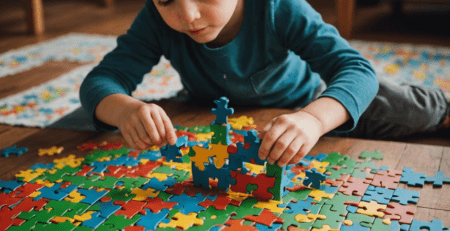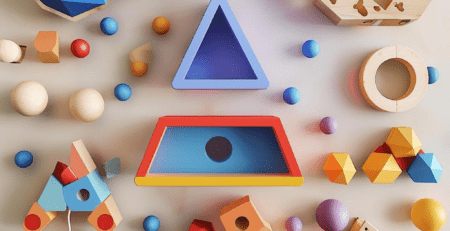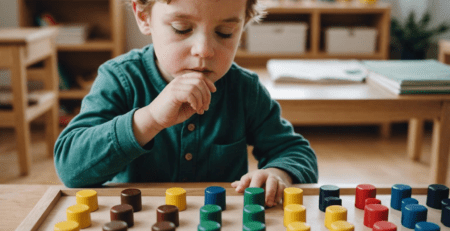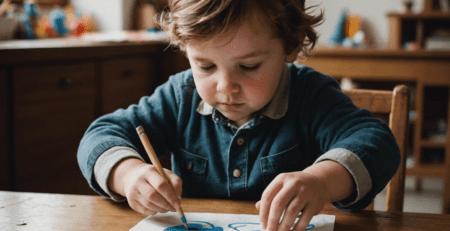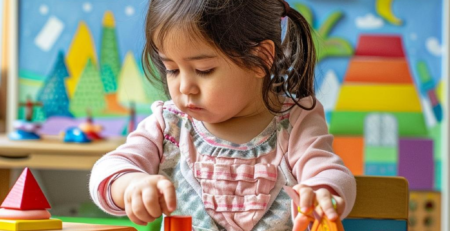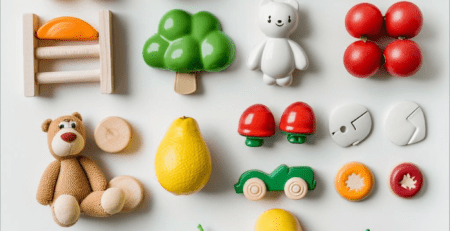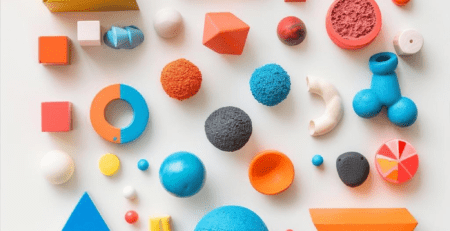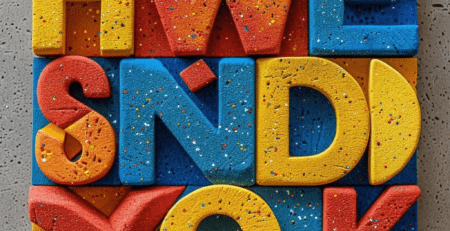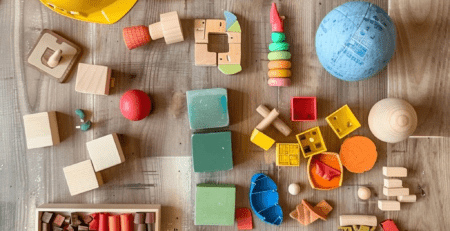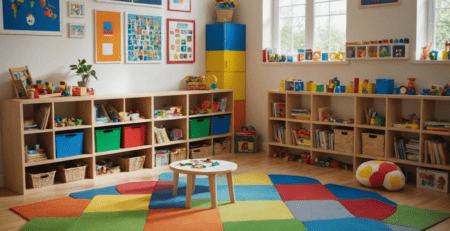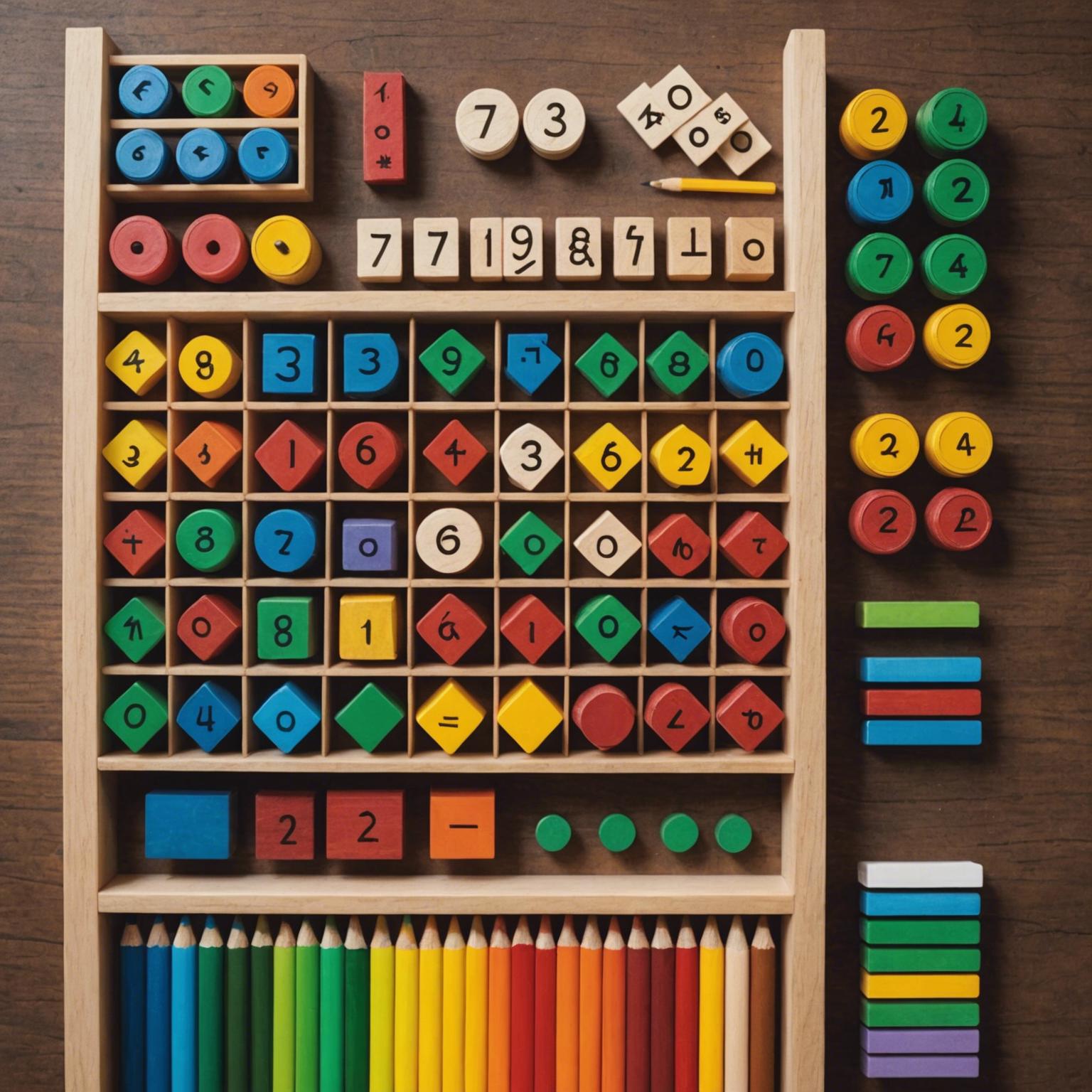
15
Montessori Math Materials: Age-Appropriate List
The Montessori method of education is renowned for its hands-on, experiential approach to learning. One of the key components of this method is the use of specially designed materials that cater to a child’s developmental stage. In the realm of math education, these materials are carefully crafted to introduce and reinforce mathematical concepts in a way that is both engaging and easily understood by young learners. In this article, we will explore a comprehensive list of Montessori math materials organized by age, providing parents and educators with a valuable resource for fostering a solid foundation in mathematical understanding for children at every stage of development.
Table of Contents
- List of Montessori Math Materials by Age
- Toddler Math Materials
- Preschool Math Materials
- Kindergarten Math Materials
- Elementary Math Materials
- Q&A
- Wrapping Up
List of Montessori Math Materials by Age
Early Childhood (Ages 3-6)
In the early years, Montessori math materials focus on introducing basic mathematical concepts in a hands-on, concrete way. Some popular materials for this age group include:
- Number Rods: These are used to help children understand the concept of quantity and develop a sense of sequence and order.
- Sandpaper Numerals: These tactile materials help children understand the symbols representing each number.
- Spindle Boxes: This material aids in teaching children to associate and understand the concept of quantity with the corresponding numeral.
- Golden Bead Material: Used for introducing the decimal system and the concepts of units, tens, hundreds, and thousands.
Elementary (Ages 6-12)
For elementary-aged children, Montessori math materials delve deeper into more advanced mathematical concepts. Some materials used in this age group include:
- Bead Material: This includes bead bars, squares, and cubes, which are used to illustrate the operations of addition, subtraction, multiplication, and division.
- Decimal System Material: This material further develops children’s understanding of the decimal system and introduces concepts of place value and borrowing.
- Geometric Solids: These materials are used to explore the properties and relationships of geometric shapes and solids.
- Test Tubes with Number Chips: Used to illustrate addition, subtraction, multiplication, and division of fractions and decimals.
Adolescent (Ages 12-18)
For adolescents, Montessori math materials focus on reinforcing and applying mathematical concepts to real-world situations. Some materials used for this age group include:
- Algebraic Pegboard: This material is used to teach algebraic concepts such as factoring, completing the square, and solving quadratic equations.
- Trinomial Cube: Used to introduce and provide hands-on experience with the concept of algebraic trinomials.
- Quadratic Equations and Binomial Equations: Materials used to assist in understanding and solving quadratic and binomial equations.
- Geometry Cabinet: Used to explore and study the properties and relationships of different geometric shapes and figures.
Incorporating Montessori math materials by age helps children build a strong foundation in mathematics and develop a deep understanding of mathematical concepts at each stage of their development.
Toddler Math Materials
When it comes to teaching toddlers about math, Montessori materials are a fantastic way to introduce foundational concepts in an engaging and hands-on manner. Below is a list of Montessori math materials by age that can help foster a love for numbers and logic at an early age.
- Sensory Balls: These textured balls help infants and toddlers develop their sense of touch and hand-eye coordination.
- Nesting Cups: Colorful nesting cups can be used for counting, stacking, and sorting, making them a versatile math tool.
- Shape Sorters: Introducing basic shapes through sorting activities can lay the foundation for geometry and spatial awareness.
- Counting Bears: These cute, colorful bears can be used for sorting, counting, and basic addition and subtraction activities.
- Number Cards: Large, colorful number cards are perfect for helping toddlers recognize and identify numbers.
Incorporating these Montessori math materials into a toddler’s learning environment can provide a solid foundation for mathematical concepts and critical thinking skills. By introducing these materials at an early age, children can develop a positive attitude towards mathematics and build a strong mathematical foundation that will benefit them throughout their academic journey.
Preschool Math Materials
- Number Rods: These colored rods introduce children to the concept of quantity, length, and measurement through visual and tactile experiences.
- Spindle Boxes: Helping children grasp the concept of numerical order and quantity, spindle boxes engage preschoolers in counting and matching activities.
- Geometric Solids: Exploring 3D shapes through hands-on manipulation provides children with valuable spatial reasoning and problem-solving skills.
Kindergarten Math Materials
When it comes to providing young children with the tools they need to develop essential math skills, Montessori math materials are an excellent choice. These materials are specifically designed to be engaging and interactive, helping children to learn fundamental math concepts through hands-on exploration and play. Here is a list of Montessori math materials for kindergarten-aged children:
Ages 3-6
- Number Rods: These colorful wooden rods help children visualize and understand the concept of quantity and the relationship between numbers.
- Spindle Box: This material introduces children to the concept of zero and helps them understand the association between quantity and symbol.
- Sandpaper Numbers: A tactile way for children to learn number recognition and practice their fine motor skills by tracing the shape of each number.
Ages 4-6
- Golden Bead Material: This material allows children to explore the decimal system and learn the concepts of place value and addition.
- Stamp Game: Children use this material to practice addition, subtraction, multiplication, and division in a fun and interactive way.
- Bead Frames: These frames help children visualize and practice multiplication and division using colorful beads.
These Montessori math materials are just a few examples of the many resources available to help children develop a strong foundation in math. By incorporating these materials into the kindergarten curriculum, educators can provide a rich and engaging learning experience that sets children up for success as they progress through their academic journey.
Elementary Math Materials
Montessori education emphasizes hands-on, sensory learning, especially in the realm of mathematics. Here is a list of Montessori math materials organized by age groups, to help children learn and understand mathematical concepts in a fun and engaging way.
Lower Elementary (Ages 6-9)
- Golden Bead Material: Understanding place value and basic mathematical operations.
- Stamp Game: Introducing addition, subtraction, multiplication, and division with a visual representation.
- Racks and Tubes: Exploring the concept of linear counting and skip counting.
- Multiplication Bead Board: Reinforcing multiplication tables through hands-on manipulation.
Upper Elementary (Ages 9-12)
- Decimal Checkerboard: Understanding the decimal system and reinforcing multiplication and division facts
- Pythagoras Board: Introducing square roots and factoring of numbers.
- Teen and Ten Boards: Reinforcing place value and advanced mathematical concepts.
- Algebraic Pegboard: Introducing algebraic concepts and operations.
| Age Group | Math Materials |
|---|---|
| Preschool (Ages 3-6) | Number Rods, Spindle Boxes, Number Cards and Counters, Sandpaper Numbers |
| Lower Elementary (Ages 6-9) | Golden Bead Material, Stamp Game, Racks and Tubes, Multiplication Bead Board |
| Upper Elementary (Ages 9-12) | Decimal Checkerboard, Pythagoras Board, Teen and Ten Boards, Algebraic Pegboard |
Q&A
Q: What are some Montessori math materials suitable for toddlers?
A: Toddlers can begin with simple materials like the Number Rods, Sandpaper Numerals, and Spindle Boxes to introduce them to the concept of numbers and quantities.
Q: What math materials are appropriate for preschool-aged children?
A: Preschoolers can start working with more advanced materials such as the Number Rods, Number Boards, and the Decimal System to further develop their understanding of numbers and basic mathematical concepts.
Q: What are some Montessori math materials recommended for kindergarten-aged children?
A: Kindergarteners can begin using materials like the Golden Bead Materials, the Stamp Game, and the Snake Game to delve deeper into addition, subtraction, and more complex mathematical operations.
Q: What math materials are ideal for elementary school-aged children?
A: Elementary school-aged children can benefit from using materials such as the Checkerboard, the Bead Frame, and the Multiplication Bead Board to solidify their understanding of multiplication, division, and other advanced mathematical concepts.
Q: Where can one purchase Montessori math materials for children of different ages?
A: Montessori math materials can typically be purchased from educational supply stores, online retailers specializing in Montessori materials, or directly from Montessori schools and educational organizations.
Wrapping Up
The Montessori method provides a wide range of math materials tailored to each child’s age and developmental stage. By introducing these materials at the appropriate time, children can build a strong foundation in mathematics that will serve them throughout their lives. From sensorial materials for the youngest learners to advanced manipulatives for older students, the Montessori approach aims to promote a deep understanding of mathematical concepts through hands-on exploration and discovery. By incorporating these materials into the learning environment, educators and parents can help children develop a love for mathematics and a lifelong enthusiasm for learning. We hope this list of Montessori math materials by age has been helpful in understanding the diverse and enriching resources available for children in the Montessori classroom.

